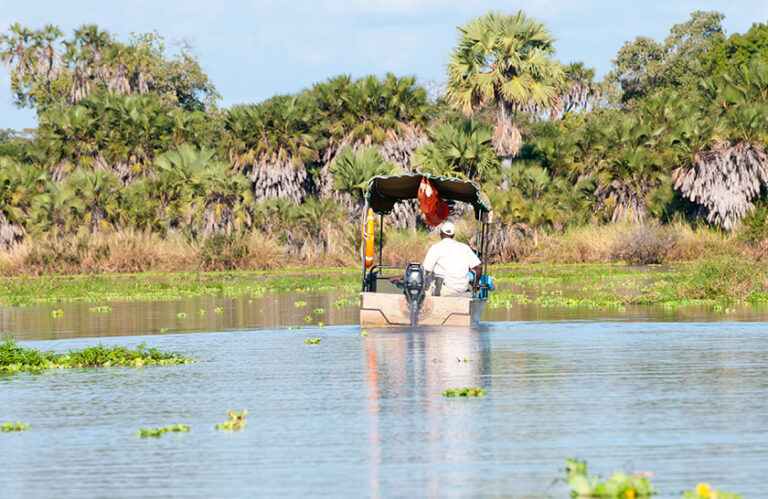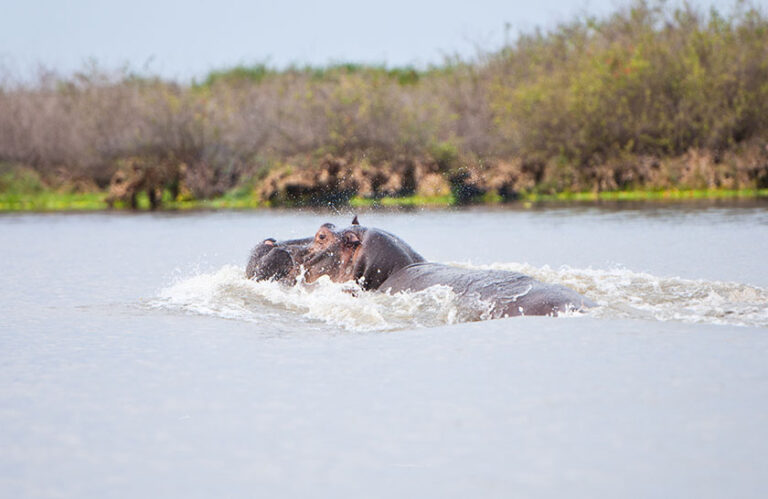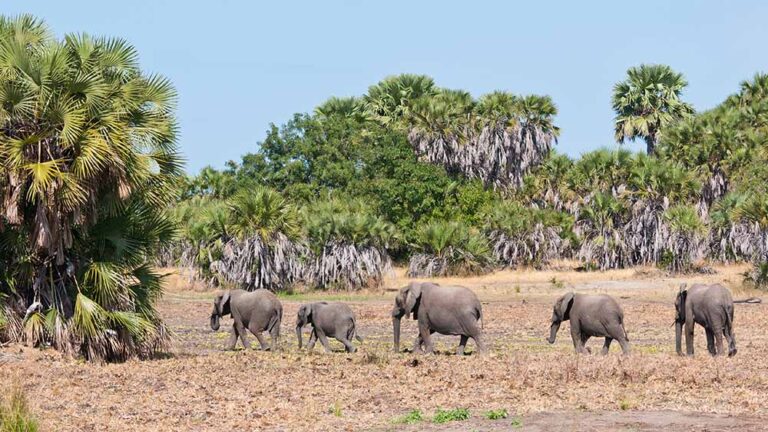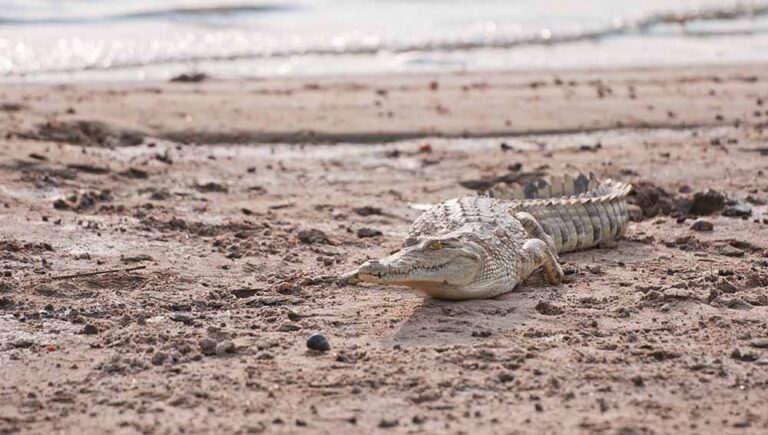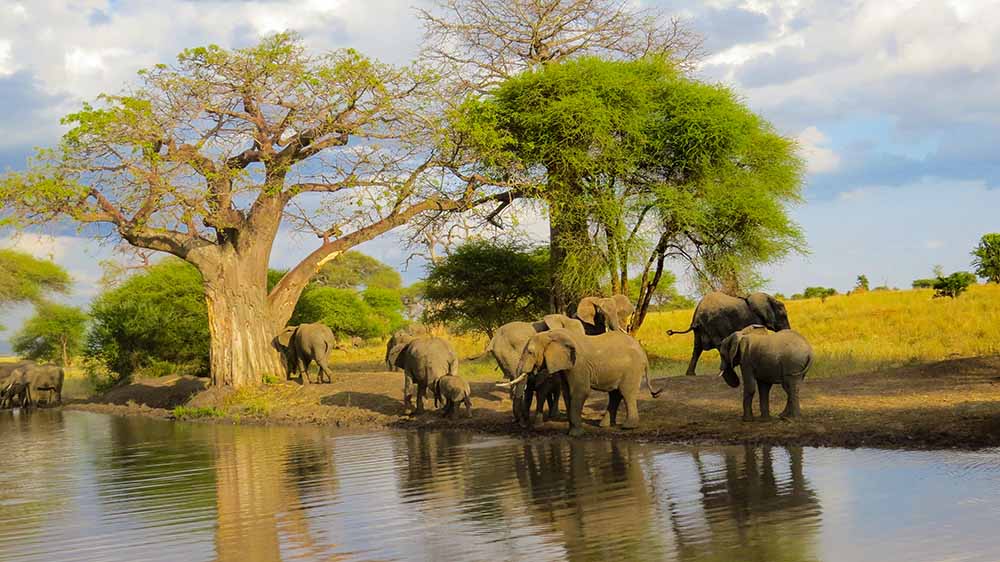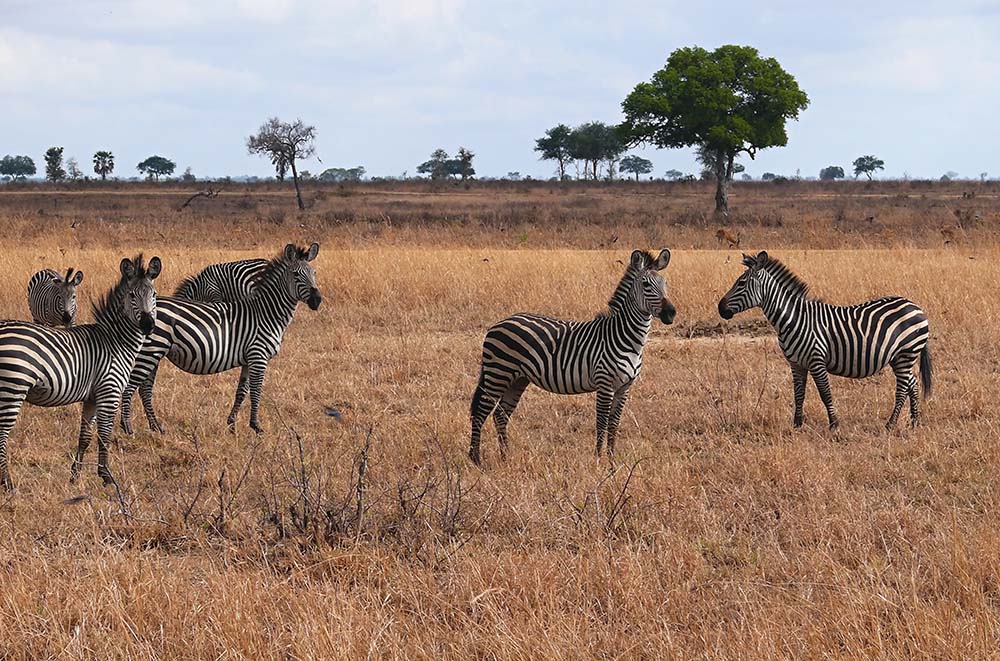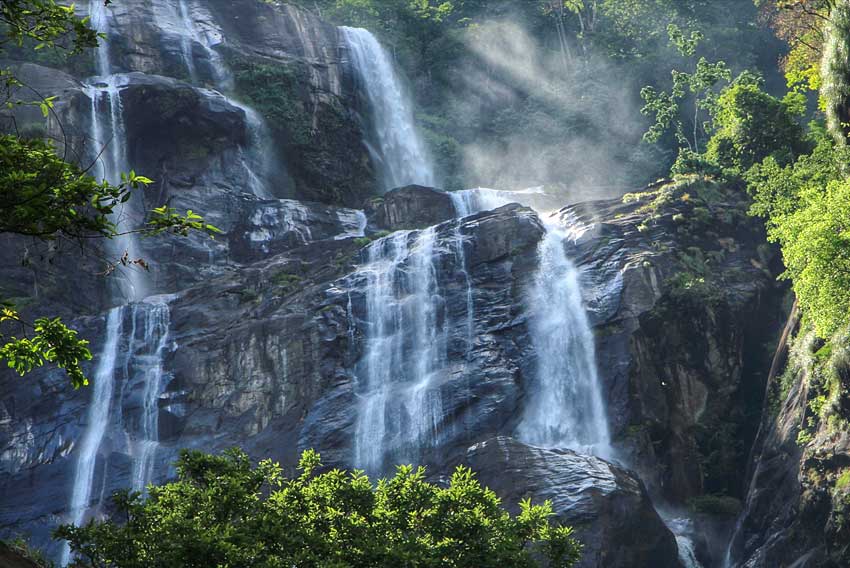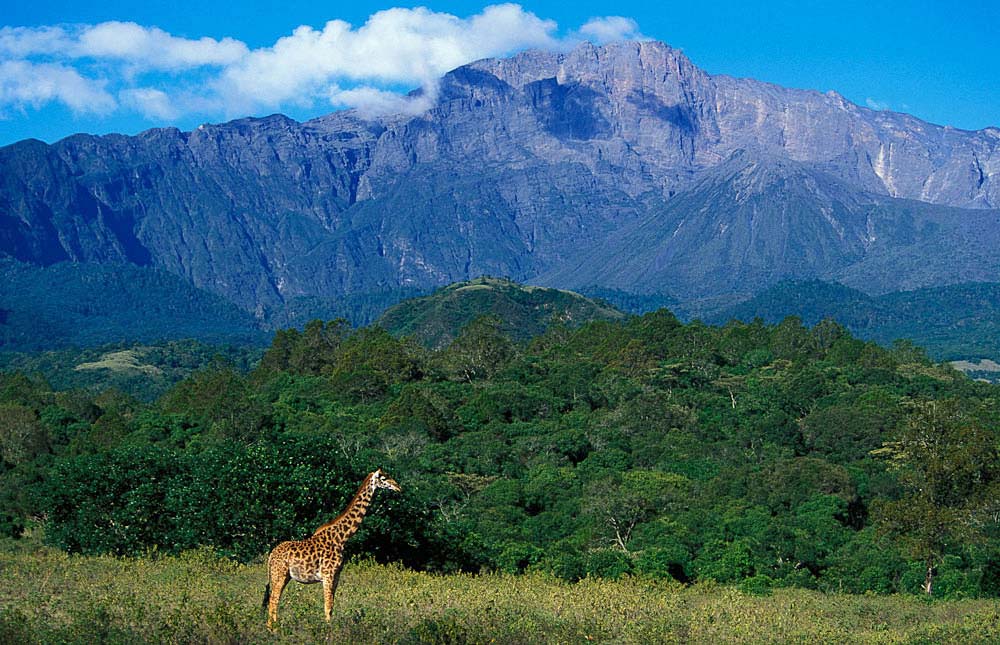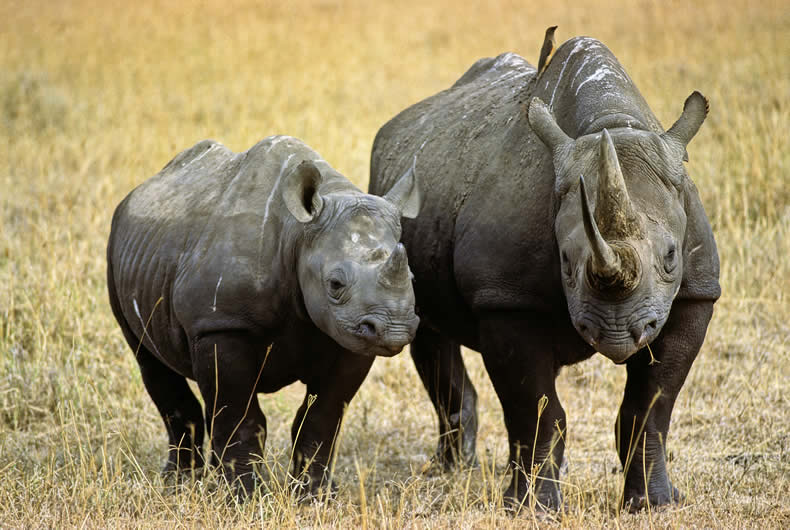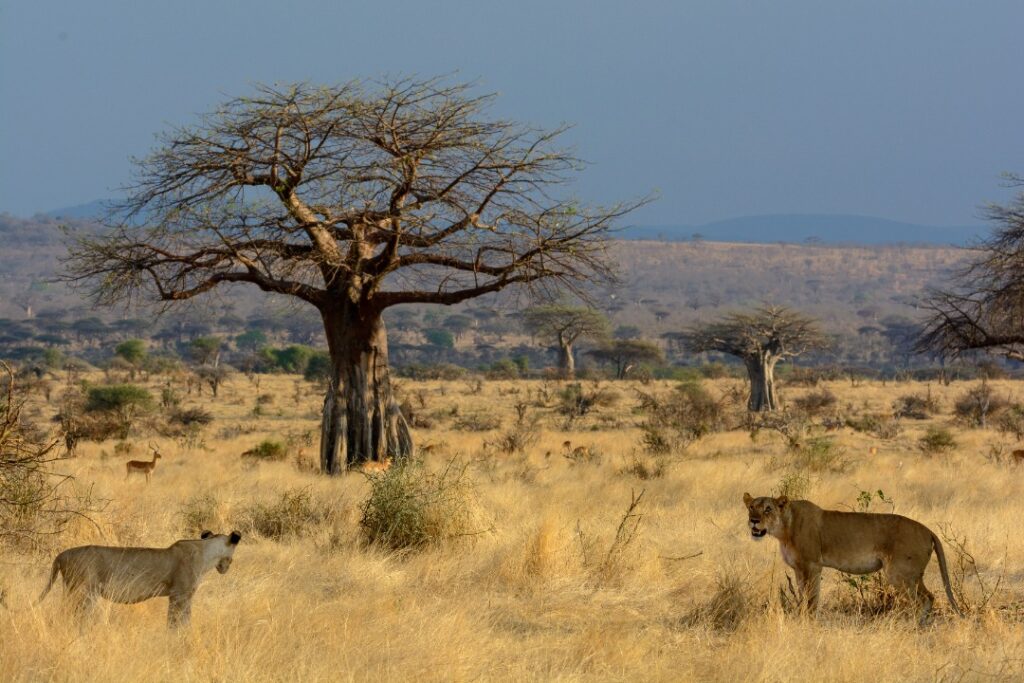Nyerere National Park
Overview
Formerly part of the iconic Selous Game Reserve, Nyerere National Park is now Tanzania’s largest national park, covering over 30,000 square kilometers of protected wilderness. Named after the country’s founding father, Julius Nyerere, this vast and untamed landscape is a jewel of the southern safari circuit. Here, wildlife roams freely in enormous numbers across open plains, dense woodlands, and along winding river systems that teem with life.
What sets Nyerere apart is its diversity—not just in habitats and species, but also in safari experiences. While northern parks are known for game drives, Nyerere offers boat safaris, walking safaris, and traditional game drives, all within one of the most ecologically rich areas in Africa. Despite its size and wildlife abundance, the park sees far fewer visitors than Serengeti or Ngorongoro, making it ideal for travelers seeking a quiet, wild, and immersive safari experience.
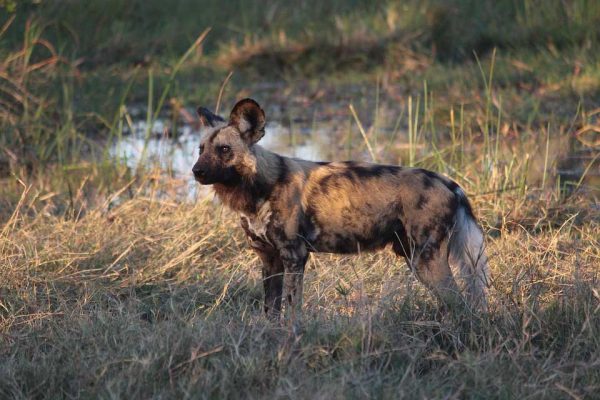
Park Highlights
Immense size: The largest national park in Tanzania and one of the biggest protected ecosystems in Africa.
River wildlife viewing: The Rufiji River, dotted with sandbanks and oxbow lakes, is home to hippos, crocodiles, and abundant birdlife.
Elephant and buffalo herds: Nyerere supports some of Africa’s largest populations of elephants, buffalo, and giraffes.
Predator sightings: Regular sightings of lions, leopards, spotted hyenas, and occasionally African wild dogs.
Birding paradise: Over 440 bird species make this park a hotspot for both casual birders and avid ornithologists.
Low visitor density: With vast space and few tourists, safaris feel exclusive and deeply connected to nature.
Activities in Nyerere
- Boat safaris: Unique to Nyerere, boat rides on the Rufiji River offer up-close encounters with hippos, crocodiles, and water birds.
- Game drives: Explore the vast savannahs and woodlands on morning or evening drives in search of predators and large herbivores.
- Walking safaris: Accompanied by an armed ranger, experience the bush on foot and learn about tracks, plants, and the smaller wonders of the wild.
- Fishing: Sport fishing is allowed in designated areas—try your luck catching tigerfish or catfish in the Rufiji River.
- Photographic safaris: The scenery, light, and proximity to water provide dramatic compositions and unforgettable photo opportunities.
Best Time to Visit
Nyerere is accessible for most of the year, but the dry season is best for wildlife viewing:
June to October (Dry Season): Ideal for game viewing, especially along the Rufiji River as animals gather at shrinking water sources.
November to April (Green Season): The park is lush and green, birdlife is at its best, and crowds are minimal. Some roads may be muddy or impassable.
May: Transitional month with drying conditions and improving road access.
Because of its remoteness, most visitors fly into Mtemere or Matambwe airstrips via scheduled charters from Dar es Salaam or Zanzibar, making it a perfect pairing with coastal stays or southern Tanzania itineraries.


